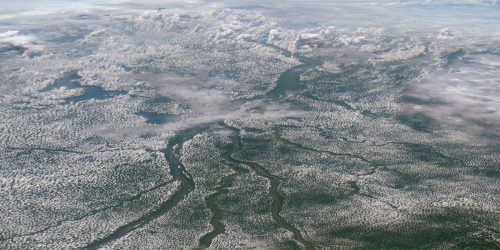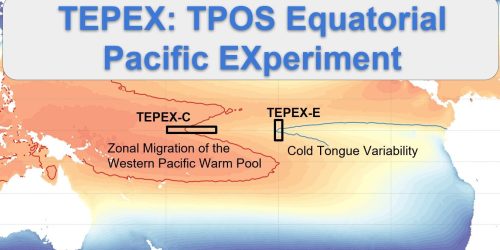Research funded by CPO’s Climate Variability and Predictability (CVP) and published in the Journal of Climate found that increased carbon dioxide suppresses variability of the Atlantic Meridional Overturning Circulation (AMOC) in GFDL ESM2M simulation. The paper by MacMartin et al., “Suppression of AMOC variability at increased CO2,” was published online on March 8, 2016.
The AMOC is a critical component of Earth’s climate system, and its modes of variability are linked to global temperature, Arctic sea ice, and ocean and coastal ecosystems. As carbon dioxide accumulates in the atmosphere (as well as the ocean), modification of the variability and mean of the AMOC is a matter of great interest and concern – particularly when considering potential climate tipping points.
While many recent studies using the Stommel (1961) box model suggest that AMOC variability may increase with increased CO2, a recent study supported by the Climate Variability and Predictability program and accepted for publication in the Journal of Climate affords some evidence to the contrary.
MacMartin et al. employed GFDL ESM2M under pre-industrial and 4xCO2 simulations to determine the effect of increased CO2 on AMOC and found that both variability and mean AMOC decreased. “In the preindustrial simulation, this model has a peak in the power spectrum of both AMOC and northwards heat transport at latitudes between 26N and 50N.
In the 4xCO2 simulation, the only significant spectral peak is near 60N. This is predominantly due to a shift in the internal ocean dynamics rather than a change in stochastic atmospheric forcing. The reduction in variance from 26–45N is due to an increased stratification east of Newfoundland that results from the shallower and weaker mean overturning.”
An interesting additional consideration is their finding that 4xCO2 significantly affects sea ice in the North Atlantic. The authors believe that monitoring the subpolar gyre (as OSNAP is designed to do) could be critical to “understanding and predicting high-latitude climate variability under climate change.” To this end, they suggest further hierarchical modeling and future studies with a broader set of models.
To learn more, access the full report: http://dx.doi.org/10.1175/jcli-d-15-0533.1
Increased carbon dioxide suppresses AMOC variability in GFDL ESM2M simulation











